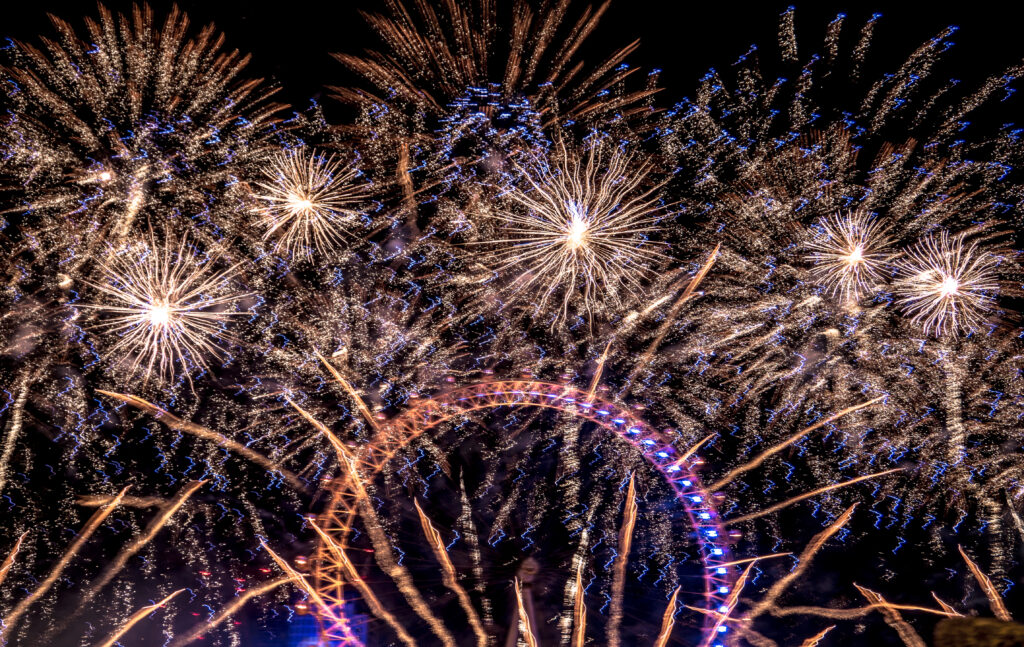Dr. Loretta Lou, Department of Sociology, University of Warwick
Each year, capital cities around the world welcome the new year with spectacular fireworks displays. Although few of us would associate this annual tradition with environmental pollution, scientists have found that fireworks are responsible for high concentrations of airborne particles that are more toxic than from traffic sources. Moreover, fireworks pollution doesn’t just affect the atmosphere. As King’s College Lecturer Gary Fuller points out, ‘what goes up has to come down. Fireworks that fall to the ground contain residues of unburnt propellants and colourants, while particle pollution in the air eventually deposits on the ground or gets washed out by rain. Some of this finds its way into lakes and rivers, where percolate has been linked to thyroid problems, causing limits to be set for drinking water in some US states.’
Despite its environmental cost, fireworks pollution has attracted little media attention in the U.K. By contrast, fireworks bans have been underway in parts of the world where toxic smog is a daily struggle.
Despite its environmental cost, fireworks pollution has attracted little media attention in the U.K. By contrast, fireworks bans have been underway in parts of the world where toxic smog is a daily struggle. In Tianjin, China, fireworks are forbidden from 1 January 2018 amid China’s efforts to fight air pollution in the Beijing-Tianjin-Hebei (BTH) region. Last year, India’s Supreme Court reinstated a ban on the sale of fireworks in New Delhi and its nearby regions when air pollution reached a breaking point after the Diwali celebrations in 2016. In the tech world, growing awareness of fireworks pollution has prompted Intel to develop new technologies like the drone light shows, which could be used to replace today’s toxic fireworks.
The complex process in which toxins are understood and made visible by the wider public is a theme that my colleagues and I are going to explore in our upcoming workshop ‘(In)visibility and Pollution: Making ‘Sense’ of Toxic Hazards and Environmental Justice’ in May 15-16, 2018. Relevant to this is the notion of ‘chemical intimacies’—a theoretical and methodological framework that Jaworski uses to make sense of people’s experience and narratives of chemical (in)sensitivities amid subtle ‘chemical background noise’ (Shapiro 2015). Research that traces chemical intimacies ask how feelings, sensations, reasoning, and relatedness figure in the process and the politics of recognising toxic exposure. How important are each of them? Although fireworks pollution is backed by a number of scientific studies, its toxic effect seems to be offset by the exhilaration that fireworks afford us. Its ephemeral nature also makes the problem appears as less serious because the pollution that fireworks generate is considered as only temporary, thus less closely related to our everyday life. In contrast, the idea that our bodies are exposed to toxins on a daily basis resonates with our common experience, even though it is unclear what these toxins are, common sense tells us that repeated exposure to poisonous substances—whether it is by ingestion or by inhalation—has far more serious consequence than temporary exposure. So what counts as an exposure and how toxins are recognized very much determine our actions, or lack thereof.
In our first issue in 2018, we present three articles on the experience of toxic exposure in Greater China. Paul Jobin, Hsin-hsing Chen, and Yi-ping Lin bring us a detailed report on a recent verdict on a toxic-tort class action in Taiwan, followed by a discussion of the challenges and reward of ‘translating toxic exposure’ as STS scholars. Next we have Rowan Alcock, who argues that a new ‘down to the countryside movement’ might help reduce China’s over-reliance on chemical fertilizer, which obviously has adverse environmental impact. Finally, Fangfang Li explores the social and cultural meanings of air pollution and calls for a social and humanitarian response.
Following the publication of our first translation in the previous issue, we are delighted to publish the Chinese translation of Jobin, Chen, and Lin’s report in this issue. In doing so we hope Toxic News would reach out to a more diverse readership in the future. Speaking of impact and outreach, I am pleased to announce that the animation about our Toxic Expertise project is now live and you can view the video via this link!
Editorial note: The Toxic Expertise Project is currently accepting submissions for its third annual workshop at the University of Warwick. More information on how to apply can be found here.
Image Credit: Y, Caradec – Flickr
